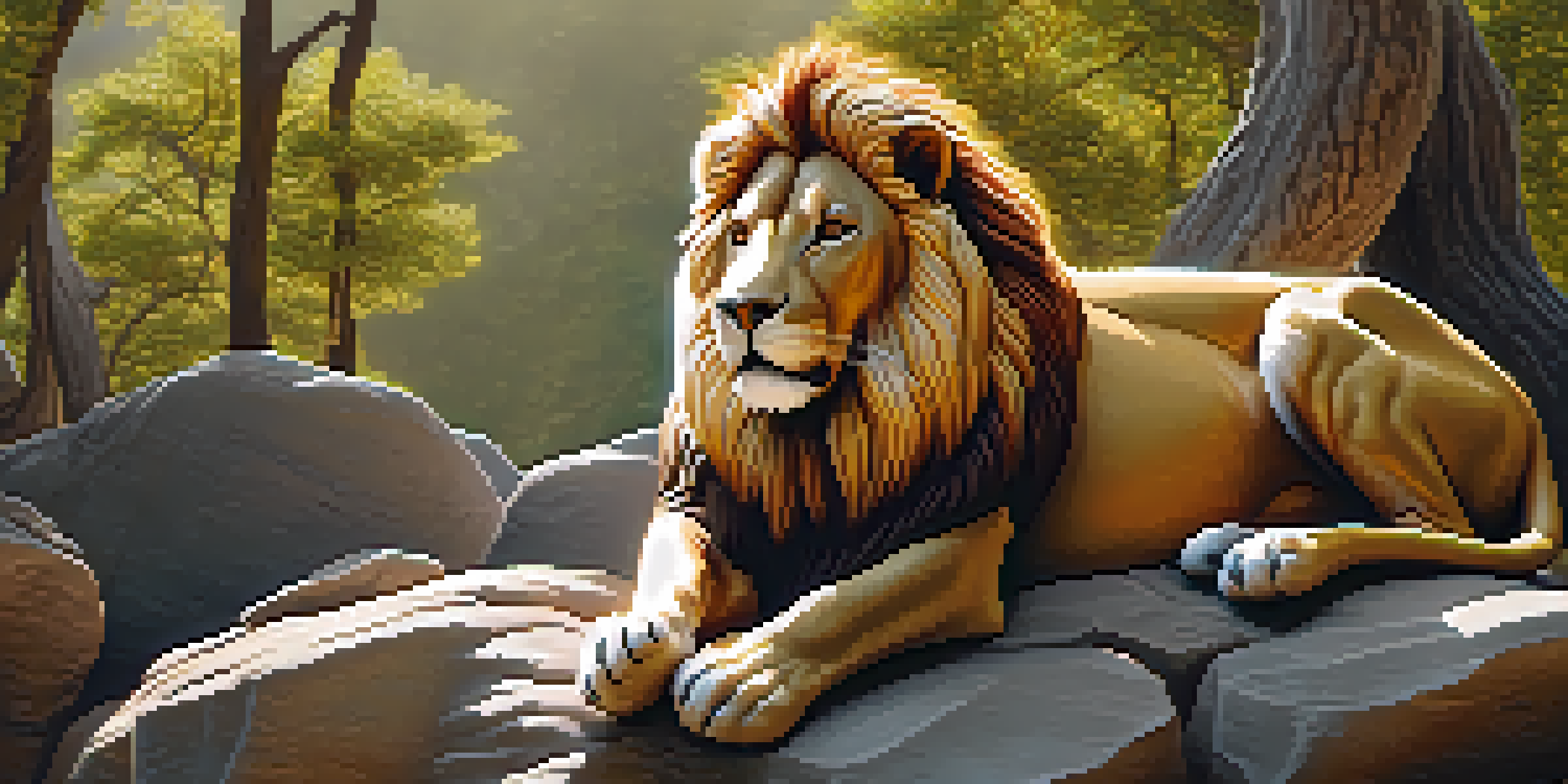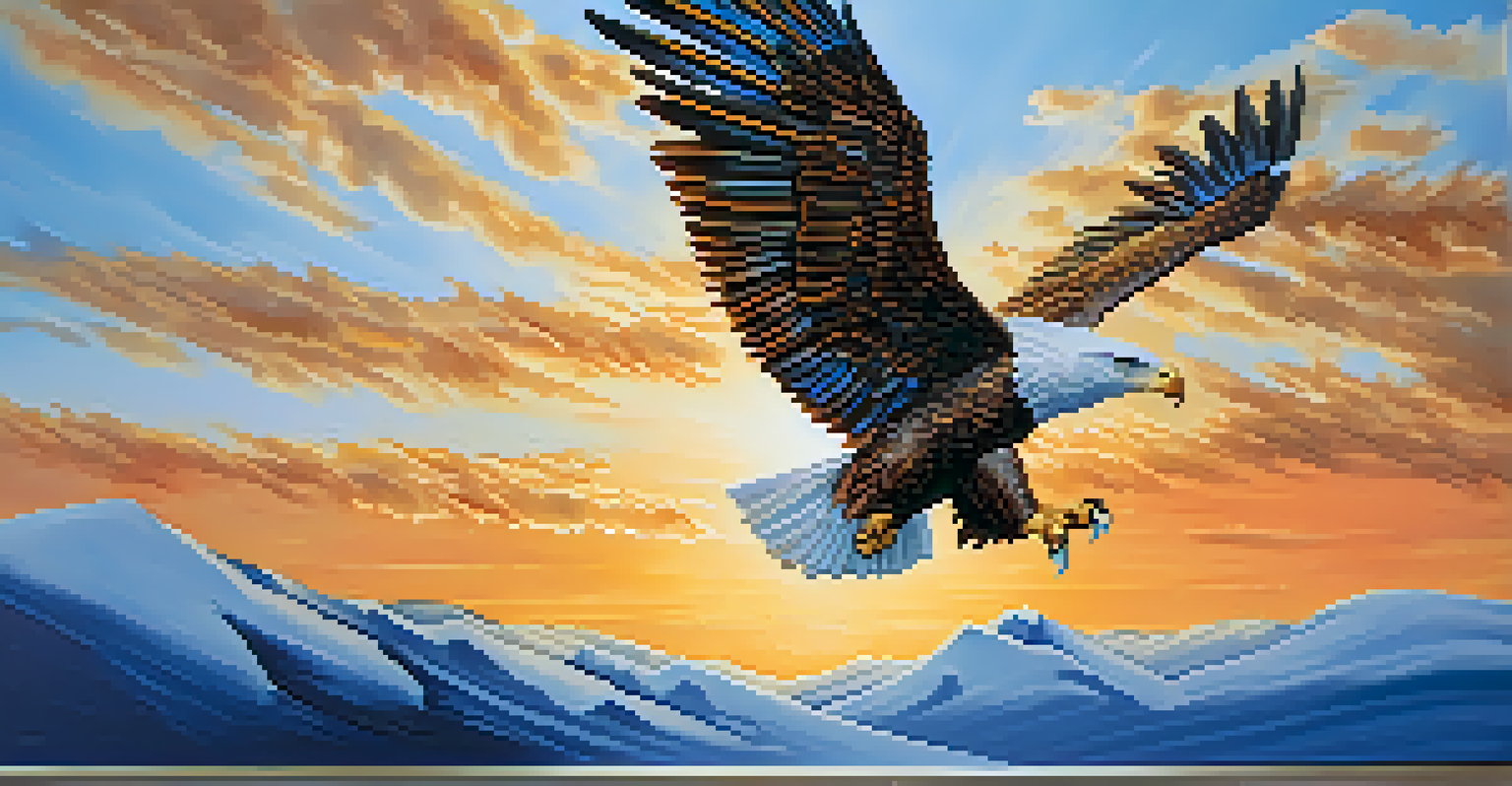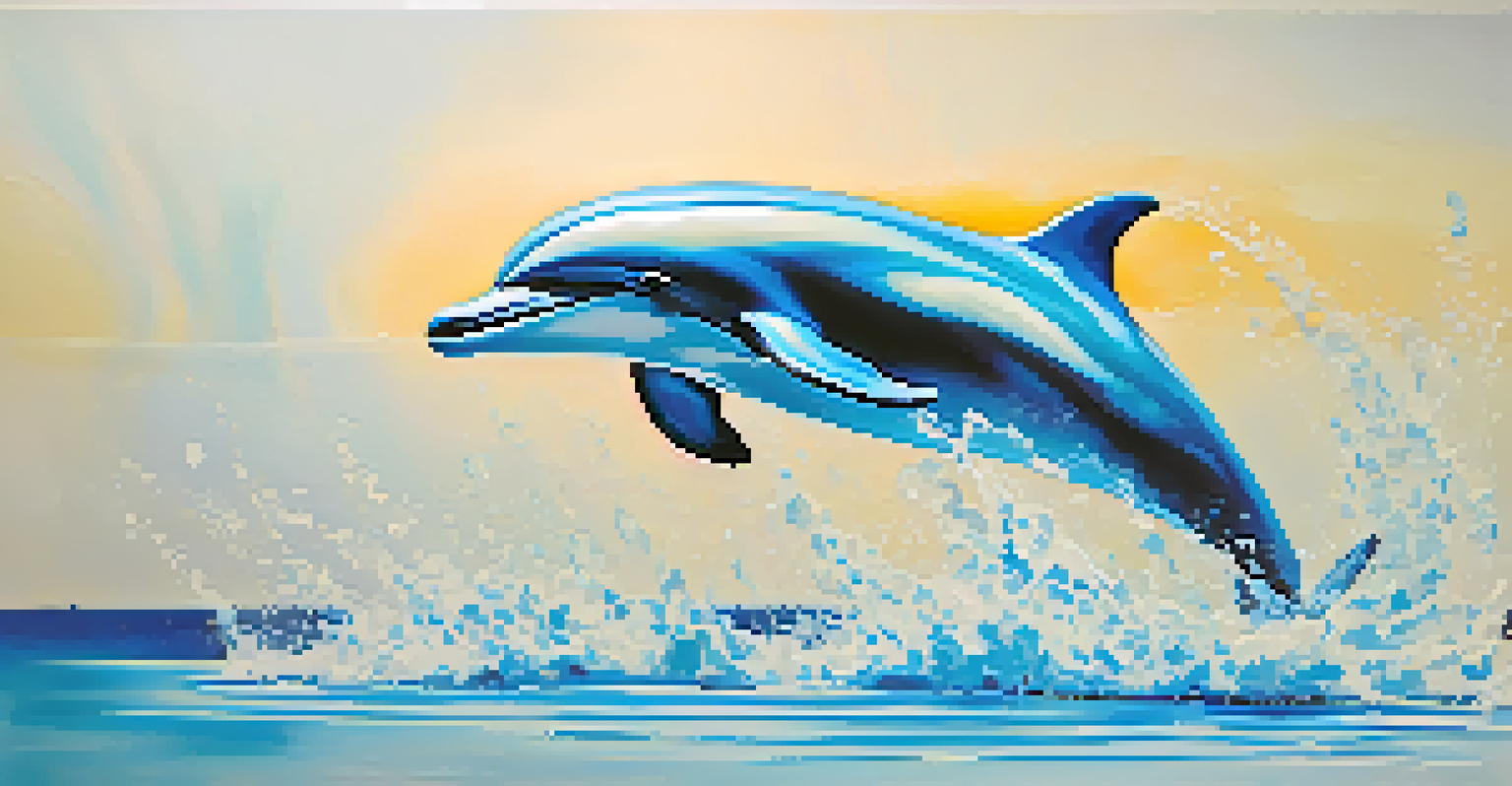Modern Techniques for Carving Animals in Synthetic Materials

Exploring the Rise of Synthetic Materials in Sculpture
In recent years, synthetic materials have gained popularity in the world of sculpture, especially for carving animals. Unlike traditional materials like wood or stone, synthetic options offer versatility and durability, making them ideal for modern artists. These materials can mimic the texture and appearance of natural substances while providing a lighter and more manageable medium.
Art is not what you see, but what you make others see.
Artists are increasingly drawn to synthetic materials because they allow for greater experimentation and creativity. For instance, resin and fiberglass can be easily molded into intricate shapes, enabling the creation of detailed animal sculptures that might be challenging to achieve with traditional methods. This shift towards synthetic materials not only reflects changes in artistic preferences but also responds to environmental considerations, as many artists seek sustainable options.
With the advancement of technology, sculptors can now access a variety of synthetic materials that enhance their work’s aesthetic and practical qualities. For example, some synthetic materials come with built-in UV resistance, ensuring that outdoor sculptures maintain their color and integrity over time. This innovation opens up new possibilities for artists looking to push the boundaries of their craft.
Digital Tools and 3D Printing in Animal Carving
Digital tools and 3D printing have revolutionized the way artists approach carving animals from synthetic materials. By using software, artists can create detailed digital models of their designs, which can then be transformed into physical sculptures using 3D printers. This process not only speeds up production but also allows for intricate details that would be difficult to achieve by hand.

One of the significant advantages of 3D printing is the ability to experiment with different designs without wasting materials. Artists can easily modify their digital models, print prototypes, and make adjustments before committing to the final piece. This iterative process encourages creativity and innovation, as artists can explore various forms and textures in their animal sculptures.
Synthetic Materials Enhance Sculpture
Artists are increasingly using synthetic materials like resin and fiberglass for their versatility and sustainability in animal sculptures.
Moreover, 3D printing opens the door to collaborative projects, where multiple artists can work on a single piece from different locations. By sharing digital files, they can combine their unique styles and techniques, resulting in a rich tapestry of creativity that reflects modern artistic trends. This collaborative spirit, fueled by technology, is reshaping the landscape of animal carving in synthetic materials.
Techniques for Shaping and Finishing Synthetic Materials
When it comes to shaping and finishing synthetic materials, artists have a plethora of techniques at their disposal. Traditional carving tools can still be used, but many sculptors now rely on power tools like rotary sanders and routers to achieve smoother finishes and more precise cuts. These tools can save time and energy, allowing artists to focus on the finer details of their animal sculptures.
Creativity takes courage.
In addition to power tools, artists often incorporate techniques like layering and casting to enhance their work. For example, they may start with a solid base of one synthetic material and layer it with another to create texture and depth. This method not only adds visual interest but also provides a richer sensory experience for viewers, as the contrasts in materials invite closer inspection.
Finishing touches are crucial in bringing animal sculptures to life; artists frequently use paints, varnishes, or even embedded LED lights to add color and illumination. These final elements can dramatically change a piece’s presence, highlighting features or creating an atmosphere that resonates with the audience. Ultimately, the techniques used in shaping and finishing are what transform a simple idea into a stunning work of art.
Incorporating Color and Texture in Animal Sculptures
Color and texture play pivotal roles in making animal sculptures captivating and lifelike. Synthetic materials offer artists a wide range of options when it comes to adding color; they can use specialized paints designed for plastics or apply dyes that permeate the material itself. This versatility allows for vibrant, long-lasting hues that bring their animal creations to life.
Texture is equally important, as it enhances the tactile experience for viewers. Artists can create various textures using techniques like carving, sanding, or even applying materials like silicone or plaster to achieve desired effects. For instance, a sculpture of a fluffy animal might feature a soft, textured finish, while a sleek, shiny surface might represent a reptile's glossy skin.
3D Printing Transforms Animal Carving
Digital tools and 3D printing allow artists to rapidly prototype and collaborate, fostering creativity in animal sculpture design.
By thoughtfully combining color and texture, artists can evoke emotions and tell stories through their work. A brightly colored bird might symbolize freedom and joy, while a dark, rugged bear could represent strength and resilience. These choices extend beyond aesthetics, allowing the artist to communicate deeper meanings and connect with their audience on a more emotional level.
Sustainability in Synthetic Material Carving
As awareness of environmental issues grows, many artists are focusing on sustainability in their work with synthetic materials. Innovations in eco-friendly options have emerged, including bioplastics made from renewable resources, which can significantly reduce the ecological footprint of sculpting practices. These materials not only perform well but also offer artists a chance to align their values with their creative processes.
Sustainable practices extend beyond material choices; many artists are also rethinking their entire workflow. This includes reducing waste during the carving process, recycling leftover materials, and even sourcing supplies from local vendors to minimize transportation emissions. By adopting these eco-conscious methods, artists can contribute positively to the environment while still producing stunning animal sculptures.
Moreover, sustainability in art encourages a broader conversation about the role of creativity in addressing global challenges. Artists can inspire others to consider their choices and think critically about the materials they use in their work. This movement toward eco-friendly practices not only benefits the planet but also enriches the artistic community, fostering collaboration and innovation.
Showcasing Animal Sculptures: Exhibitions and Installations
Once an artist completes their animal sculptures, the next step is showcasing their work to the public. Exhibitions and installations provide a platform for artists to share their creations, sparking conversations and connections with viewers. These events can range from small local galleries to large international art fairs, each presenting a unique opportunity for exposure.
Modern technology has also changed how sculptures are displayed, with many artists integrating interactive elements into their installations. For instance, sculptures may be combined with augmented reality experiences, allowing viewers to engage with the art in new and dynamic ways. This interactivity not only enhances the viewer experience but also invites deeper contemplation of the themes and messages behind the artwork.
Sustainability Shapes Future Art
A growing focus on eco-friendly practices is influencing artists to adopt sustainable materials and methods in their sculpture work.
As the demand grows for unique and engaging art experiences, many artists are experimenting with site-specific installations that invite dialogue about their surroundings. An animal sculpture placed in a natural setting can provoke reflections on wildlife conservation, while urban installations might comment on the relationship between nature and city life. Through these creative choices, artists can elevate their message and encourage audiences to think critically about the world around them.
The Future of Animal Carving in Synthetic Materials
Looking ahead, the future of animal carving in synthetic materials appears bright and full of possibilities. As technology continues to evolve, artists will likely discover even more innovative tools and techniques to enhance their work. From advancements in 3D printing to the development of new synthetic compounds, the potential for creativity seems limitless.
Furthermore, the growing focus on sustainability and eco-friendly practices is expected to influence the art world significantly. As artists and consumers alike prioritize environmentally responsible choices, the demand for sustainable synthetic materials will likely increase. This shift could lead to exciting collaborations between artists and scientists, paving the way for new materials that are both innovative and sustainable.

Ultimately, the future of animal carving in synthetic materials will be shaped by the artists themselves—those who challenge conventions, embrace new technologies, and advocate for sustainability. This vibrant community of creators will continue to inspire one another, pushing the boundaries of what is possible in the world of sculpture.